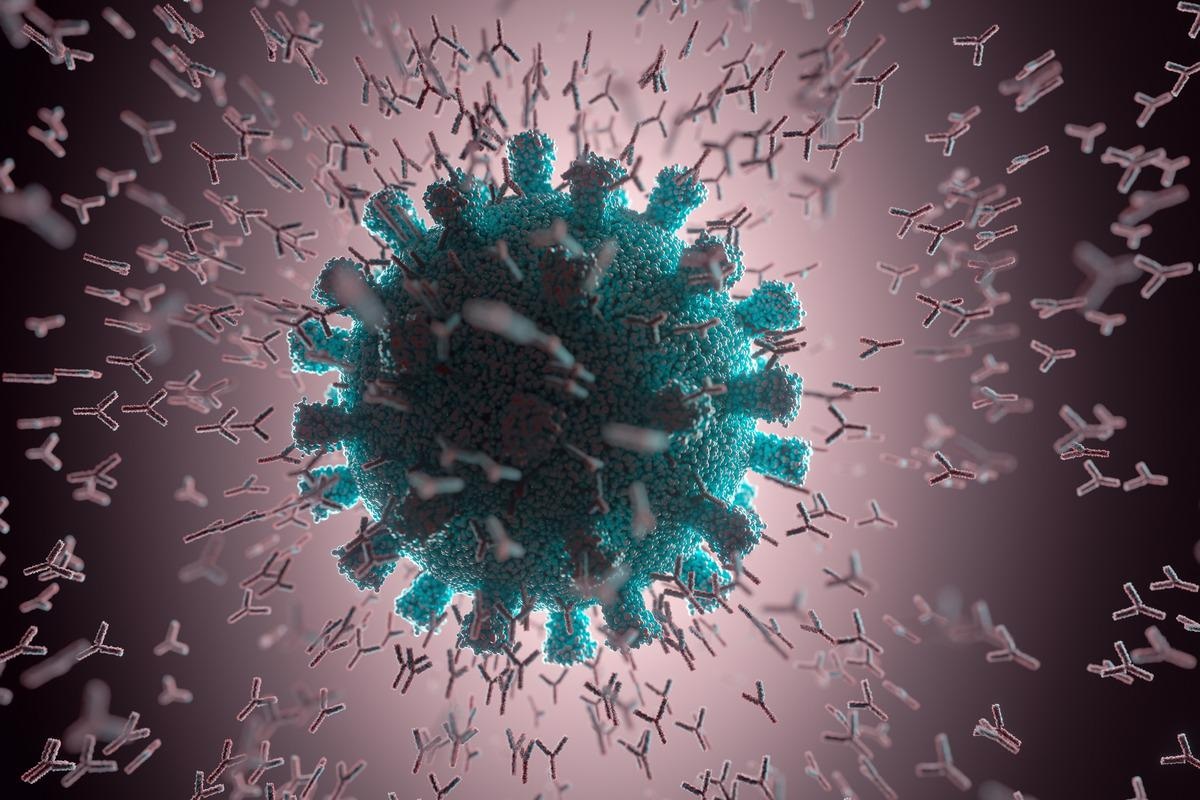

Researchers from the United States have conducted a study on coronavirus disease 19 (COVID-19) convalescent patients (CP) and post-vaccinated (PV) population to identify the minimal levels of antibody required to protect against severe acute respiratory syndrome coronavirus 2 (SARS-CoV-2) infection.
 Study: Protective characteristics of COVID-19 convalescent and post-vaccination IgG antibodies. Image Credit: ktsdesign/Shutterstock
Study: Protective characteristics of COVID-19 convalescent and post-vaccination IgG antibodies. Image Credit: ktsdesign/Shutterstock
Quantifying the levels of protective antibodies in post-vaccinated individuals is critical to monitoring the decay of protective immunity after vaccination and relating it to the occurrence of breakthrough infections.
A pre-print version of the research paper is available on the medRxiv* server while the article undergoes peer review.
Background
The spike glycoprotein (SP) forms the protruding spikes on SARS-CoV-2 that mediate attachment of the spherical virions to the host cells and subsequent fusion with epithelial cell membranes, facilitating entry and infection. It is a homotrimer consisting of two subunits, S1 and S2, of which the S1 protein interacts with the angiotensin-converting enzyme-2 (ACE-2) receptor on the cell surface through the receptor-binding domain (RBD), while the S2 protein mediates cell membrane fusion.
The RBD is the target of 90% of the neutralizing antibodies that comprise the critical element of the protective immune response against the virus. The two mRNA COVID-19 vaccines developed by Pfizer and Moderna are specifically designed to generate antibodies against the RBD.
Although several studies have focused on characterizing the antibody response to SARS-CoV-2, the studies defining the actual antibody concentrations and target binding affinities in CP and PV populations have been largely lacking.
What did the researchers do?
The team quantified the antibody concentrations and the antibody binding affinities to both SP and RBD in convalescent plasma samples as well as plasma samples obtained from individuals who completed the two mRNA vaccination protocols (Pfizer and Moderna), using quantitative ELISA methodology.
Knowing the protective efficacy of these vaccines through the phase three clinical trial reports, the team estimated the protective immunoglobulin (IgG) anti-SP antibody levels and analogous values for two indexes that combined antibody concentrations and binding affinities for both the SP and the RBD.
What did the researchers find?
For the convalescent plasma population (n = 21), anti-SP IgG antibody levels ranged from 33.1 µg/ml to 1.6 mg/ml (Geometric mean [GM] 190 µg/ml), while for the post-vaccination plasma population (n = 21) the corresponding values ranged from 4.9 µg/ml to 1.5 mg/ml (GM 176 µg/ml). The measure of anti-SP IgG antibodies for the whole spike protein was greater in the convalescent patient population, possibly reflecting that the mRNA vaccines produce antibodies more specific for the RBD. Both sample populations were similar in terms of protective antibody level of 7.5 μg/ml was determined based on 95 of the normal distribution of the post-vaccination population.
A recent meta-analysis of neutralization data from seven vaccine studies reported that 50protection against detectable SARS-CoV-2 infection would be provided by 20.2 of the geometric mean convalescent level of neutralizing antibody, equating to 2.9 µg IgG anti-SP/ml. This is consistent with the 7.5 µg/ml value responsible for 95 protection observed in the present study.
SP binding affinities (KD) of convalescent plasma samples ranged from 0.1 to 2.2 nM (mean = 0.87 ± 0.47 nM), while the range of RBD binding affinities was much narrower, all being subnanomolar (mean = 0.49 ± 0.15 nM). Spike protein binding affinities of post-vaccination plasma IgG antibodies were comparatively broader (0.2-3.9; 1.95± 0.99 nM) than those of the convalescent antibody populations. However, the post-vaccination anti-RBD affinities were virtually the same (0.48 ± 0.34 nM; p = 0.877).
Measuring antibody binding affinity adds value to assessing the robustness of the antibody response, leading to the conclusion in this study that naturally acquired immunity after SARS-CoV-2 infection is comparable to vaccine-induced immunity”, the team emphasizes.
Implications
Information on the antibody concentrations and the target affinities permits a practical understanding of protective immune mechanisms.
For example, based on a SARS-CoV-2 diameter of 100 nm and spike protein surface density of 25 trimers per virion, a concentration of 7.5 µg anti-SP IgG/ml would provide 12 molecules of antibody per spike protein molecule in a viral saturation of a mucosal surface 10 µm in depth. With SP binding affinity (KD) of 1.0 nM, 95 of SP molecules will be bound by the antibody. With the average binding affinity of 0.48 nM found for anti-RBD IgG in fully vaccinated individuals, 99 of SP molecules would be bound by the antibody. This calculation provides a conceptual framework consistent with the empirical data reported here and the foundation for developing a true protective index based on the examination of plasma.
These measures will also enable a realistic assessment of immune evasion by viral variants via monitoring the rate of protective antibody waning.
*Important notice
medRxiv publishes preliminary scientific reports that are not peer-reviewed and, therefore, should not be regarded as conclusive, guide clinical practice/health-related behavior, or treated as established information.









 Add Category
Add Category